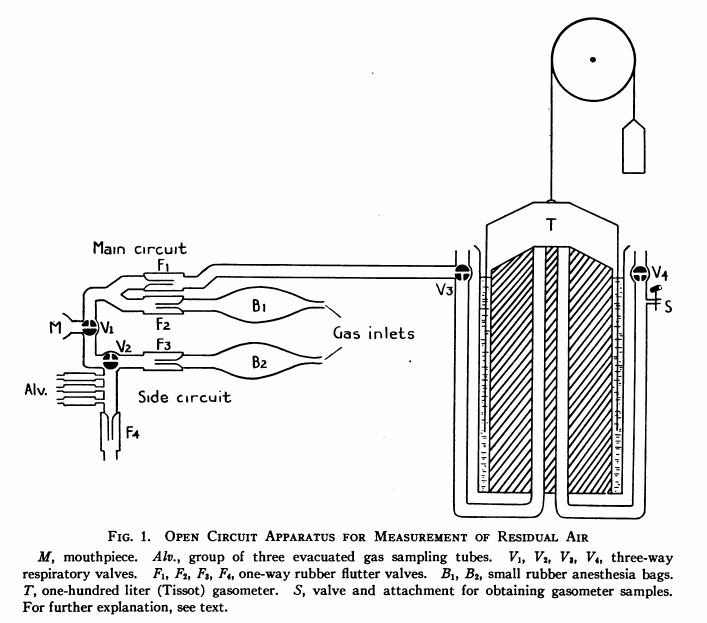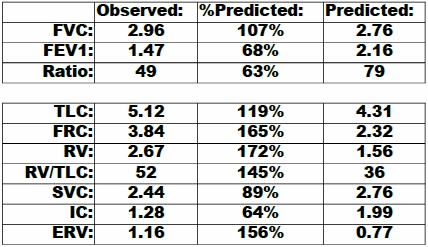Although the technology used to perform the single-breath DLCO test has improved since it was first developed in the 1950’s the essential concepts and equations have not changed significantly. Probably the most important advance has been the introduction of rapid response real-time gas analyzers in the 1990’s. Prior to that time the patient’s washout and sample volumes had to be preset which always involved a certain amount of guesswork when a patient was significantly obstructed or restricted. With a real-time gas analyzer it is possible inspect the exhaled gas tracings after the test has been performed in order to determine when washout has occurred and then select the appropriate location for the sample volume. This has improved the single-breath DLCO test quality but at the same time it has also exposed some of its limitations.
The single-breath DLCO test attempts to simplify what is actually a very complex process. One of the key assumptions of the single-breath DLCO calculations is that the inspired gas mixture is evenly distributed throughout the lung. This is not really true even for patients with normal lungs and in general, inspired gas follows the last in-first out rule. In patients with lung disease this inhomogeneous filling and emptying can be magnified and a maldistribution of ventilation is often most evident in patients with COPD.



